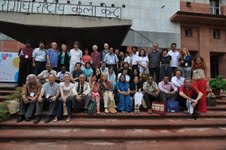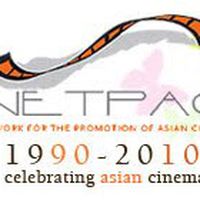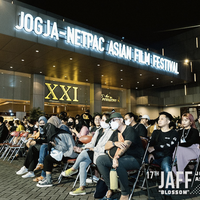New Delhi:contemporary Asian cinema at Netpac 2010
 [caption id="attachment_6202" align="alignright" width="226" caption="Netpac conference 2010, New Delhi"]
[caption id="attachment_6202" align="alignright" width="226" caption="Netpac conference 2010, New Delhi"]"piracy is a problem for commercial cinema, but for all other aspects of cinema, for loving, seeing and distributing cinema it is heaven." Gertjan Zuilhof
The following article is a review of the conference organised by the Network for the Promotion of Asian Cinema (Netpac), held in Delhi from the 18-22 August 2010. In addition to interesting reflections, a selection of resources will be highlighted in order offer an insight into Asian independent films and their distribution.
The President of Netpac, Aruna Vasudev, is firm in wanting to strengthen the role of the network from its historical need to promote and raise awareness of Asian cinema. She argues that there is now a need to increase the layers of knowledge about the cultural, social and political contexts of Asian cinema. And as such, the conference, which marked the 20th Anniversary of Netpac, entitled the Culture and Politics of Asian Cinema was proof to this intention.
Cultural specific narratives and contents in films produce a dialogue, which on one hand internalize local issues and also tend to represent cosmopolitan reflections. In fact, there isn't a solid representation of 'national' cinema production, indeed a rigorously multifaceted concept. The meaning of ‘translocal cinema’ in Asia is evolving from an understanding of its global product to its diversified character, implying a reception from below, forming negotiations and transformation like we will see in the example of film literacy. Cultural exchanges are a fruit of social and economical factors says Rolando Tolentino, Dean at the University of the Philippines. Most of the local films produced in the Philippines, says Tolentino, significantly address social critique and tend to trigger their own unique identity.
Beijing Film Academy lecturer Xie Fei offered an analysis, which touches on the globalization of the film industry in China. It strongly implies the commercialization of foreign movie productions as well as portrays the existing segmentation at the level of distribution of local Chinese films.
In India – a country that delivers films in twenty-five languages - the issue of 'multiple cinemas', which are competing among themselves, remains high on the agenda. Further, what is affecting the connectivity of Indian films to the global market is also a distinct failure in accessing adequate funding needed to promote filmmakers as well as the lack of well maintained film prints and digitized materials, says Nina Gupta from the National Film Development Corporation.
Given the media saturation of the globalized societies we are living in, there is a continuous need to create innovative ways of bridging audience to cinema. Xie Fei argues, that recently in China, due to a lack of film distribution plans, average cinema admissions per capita were the lowest in the world. This also has to be viewed in the light of the proliferation of the domestic movie market and DVD culture. However what actually counters such figures is the newly introduced free of charge film projections in rural towns. In the long run, this project would permit an exponential growth of data informing theatre admissions. New avenues for distribution- which would enable new experiences of seeing movies are also in the making in India, one possible locations being gas stations, says Yogesh Karikurve, the CEO of Magnus Entertainment.
Recent technological advents in distribution models have also shifted the business of sharing film, especially dedicated to the promotion of Asian cinema. One of the best examples of this distribution model is AsiapacificFilms.com, which enables streaming pay-per-view of Asian films to international audiences. The selection of films is curated by Netpac’s core-team. It has a growing film library, where significant classics and independent films from India and the rest of Asia have been selected and made available to stream. This project strongly enables cinema enthusiasts to broaden their knowledge in Asian cinema while assuring the highest quality.
File-sharing torrents and Youtube do not exclusively bridge cinema closer to its “non-festival” audience. What is emerging is a diversity of organised communities and institution, which practice film literacy in Southeast Asia. Director of the Film Institute, Eduardo Lejano, gives an insight into how a state-funded institution such as the University of the Philippines achieves a fair amount of independence by organizing festivals, retrospectives and premieres without facing the burden of censorship.
Nestor Jardin, the director of the independent Cinemalaya Festival model of funding film production proposes the notion that accessibility to the latest technology and alternative distribution formats enable a fast growing film production and consumption. A growing community of grassroots film clubs has been initiated in Indonesia for example. Gaik Cheng Khoo, Malaysian author and academic points out self-organised groups that organise film screenings as social events for bigger communities outside formal institutional spaces and universities. Another perspective is given by the Asian Film Archive. Besides restoring and preserving older film prints, it regularly organises screenings and public lectures in Singapore.
Reflections from the conference also shed light into the transformations of technologies from the shifting issues of accessibility and distribution models to the experimentation, diffusion and production of Asian films. Alongside scholarly analysis and trends in reading cinema, the revolution of digital filmmaking has modified the classical understanding of theatrical cinema production and consumption, especially in the context of Southeast Asia.
Alongside modern works of art, which exist because of the gallery systems, commissioned low budget film production based on a specific theme and location might become the near future of film festivals, says Gertjan Zuilhof. One of these example is the Rotterdam International Film Festival digital filmmaking programme – the Hubert Bals Fund – which specifically encourages this form of production in developing countries.
Netpac's 20th anniversary five-day celebration was supported with the partnership of many international and local institutions in Delhi. One of these was the exhibition organised by the Asian Heritage Foundation hosted at the Istituto Cervantes, called “Percursors to Cinema”. Storytelling and narratives from India offered an attractive overview into its diversified contemporary storytelling landscape. By contributing to media histories in India, these narrative journeys have opened a series of reflection about diversity, acknowledging a shared Asian experience about moving images and storytelling. Several pre-cinematic portable devices were displayed including mobile shrines 'Kavad' from Rajasthan as well as canvas boxes. Also storytelling alongside hand-painted scrolls were re-enacted live. Such pan-Indian reflection about the presence of these vernacular narratives has expanded the notion of distribution of cinematic experiences by surpassing the discourse of contemporary digital technologies.
Photo copyright: Tuck Cheong Wong
Similar content
from - to
18 Aug 2010 - 22 Aug 2010
deadline
31 Jul 2023
from - to
15 Nov 2017 - 22 Nov 2017
By Ramona David
21 Feb 2011





